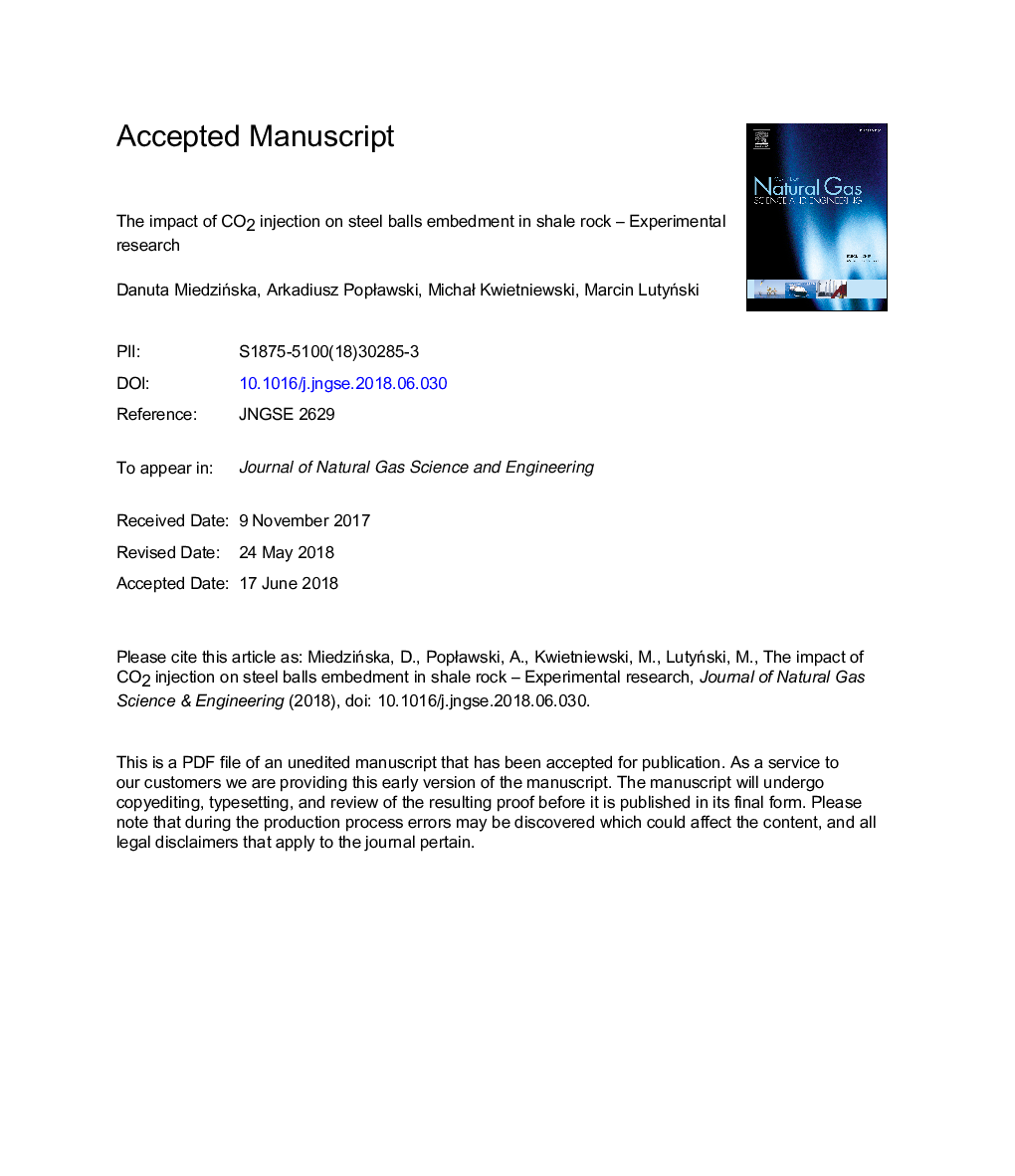| Article ID | Journal | Published Year | Pages | File Type |
|---|---|---|---|---|
| 8127935 | Journal of Natural Gas Science and Engineering | 2018 | 21 Pages |
Abstract
One of the most important phenomenon appearing during shale rock fracturing is the interaction between the proppant and fracture wall. The proppant's role is to keep the fracture open after the fracturing fluid is released and during gas recovery. However, the stress caused by the rock mass can act on proppant grains - they can be damaged or embed into fracture wall. This phenomenon, called embedment, was tested in this study with the use of an original testing device. The impact of CO2 injection on this phenomenon was presented. Special attention was paid to the change in properties of shale during the embedment process, i.e. saturation of rock with CO2 rather than proppant behaviour. As a model proppant steel balls were used for the tests. The obtained results show that the average embedment depth in the case of the steel balls in the non-CO2 environment was smaller than in the case of an average embedment depth in the case of the steel balls embedment in the CO2 environment. A significant impact of carbon dioxide on the surface of the shale rock was observed. The shale rock lost its strength after the CO2 interaction. Such phenomenon can be caused by the shale structure change connected with carbon dioxide sorption induced swelling.
Related Topics
Physical Sciences and Engineering
Earth and Planetary Sciences
Earth and Planetary Sciences (General)
Authors
Danuta MiedziÅska, Arkadiusz PopÅawski, MichaÅ Kwietniewski, Marcin LutyÅski,
